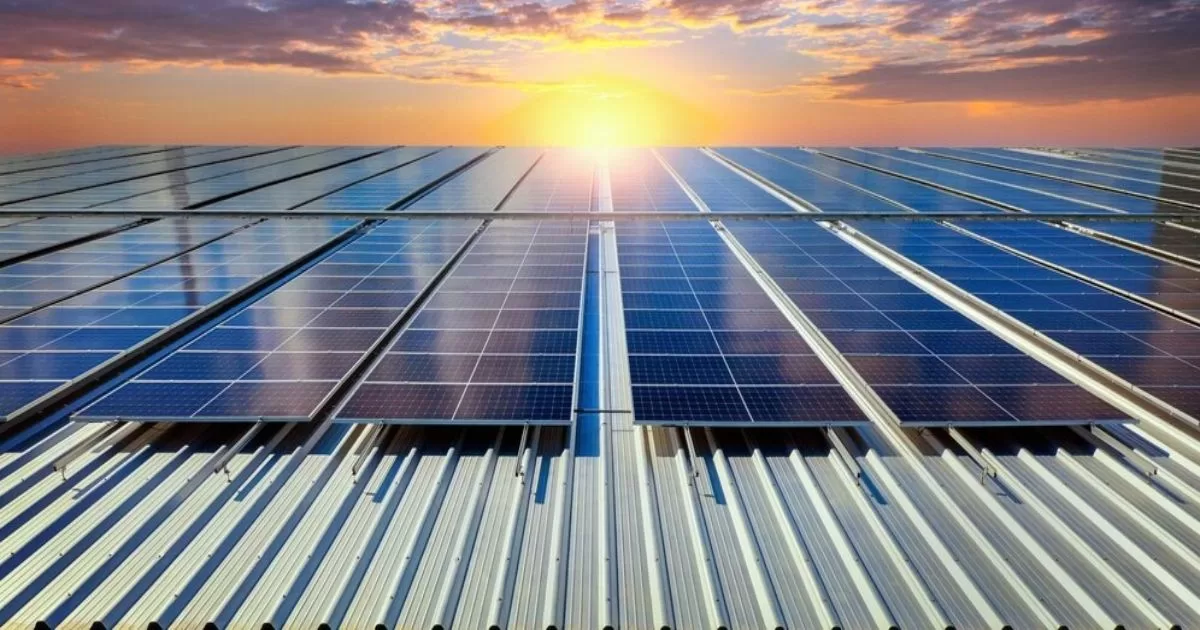MIAMI.- Power plant developers and owners plan to add 62.8 gigawatts (GW) of new utility-scale electric generation capacity in 2024, according to the latest monthly Inventory from the US Energy Information Administration (EIA). in English) where solar energy appears as the protagonist.
This new capacity represents 55% more added capacity than the 40.4 GW added in 2023 (the highest amount since 2003) and points to a continued increase in industrial activity.
“We expect solar energy to represent the largest proportion of new capacity in 2024, at 58%, followed by battery storage, at 23%,” the government body said.
How is solar energy converted into electricity?
Technically, photovoltaic solar cells (an electronic device) convert sunlight directly into electricity through the so-called photoelectric effect, by which certain materials are capable of absorbing photons (light particles) and releasing electrons, generating an electric current.
Solar. EIA Expects Record Utility-Scale Solar Addition in 2024 if the scheduled 36.4 GW are added to the network. This growth would nearly double last year’s 18.4 GW increase, which was itself a record for annual utility-scale solar installation in the United States.
More than half of the new utility-scale solar capacity is planned for three states: Texas (35%), California (10%) and Florida (6%).
Outside of these states, The Gemini solar facility in Nevada plans to begin operations in 2024. With a planned photovoltaic capacity of 690 megawatts (MW) and battery storage of 380 MW, it is expected to be the largest solar project in the United States when fully operational.
Battery storage. Also the EIA Battery storage expected to set record for annual capacity additions in 2024 and nearly double by 2024, as developers report plans to add 14.3 GW of battery storage to the existing 15.5 GW this year. In 2023, 6.4 GW of new battery storage capacity was added to the US grid, a 70% annual increase.
A battery storage system allows energy to be captured and stored from various sources in a battery system for future use. And whose increase to generate electrical energy is a fact.
Texas, with 6.4 GW planned, and California, with 5.2 GW planned, will account for 82% of new US battery storage capacity. A gigawatt, known as GW, is a unit of power that is equivalent to one billion watts.
Wind. Operators report that another 8.2 GW of wind capacity is scheduled to come online this year. Following record additions of more than 14.0 GW in both 2020 and 2021, Wind capacity additions have slowed in the last two years.
Two large offshore wind plants scheduled to come online are the 800 MW Vineyard Wind 1 off the coast of Massachusetts and the 130 MW South Fork Wind off the coast of New York. South Fork Wind, which developers hoped would begin commercial operations last year, is now scheduled to come online in March 2024.
Gas natural. By 2024, developers are targeting 2.5 GW in planned natural gas capacity additions, the lowest new natural gas capacity in 25 years.
Notably, in 2024, 79% of added natural gas capacity will come from natural gas turbine (SCGT) plants. simple cycle. This year will be the first time since 2001 that combined cycle capacity is not the predominant natural gas-based technology. SCGT power plants provide effective support to the grid because they can start, accelerate and decelerate relatively quickly.
Nuclear. The start-up of the fourth reactor (1.1 GW) at the Vogtle nuclear power plant in Georgia, initially planned for last year, has been moved to March 2024. The Unit began its commercial operation at the end of July of last year, a development that is still incipient compared to other alternatives. Although the EIA keeps it on its priority radar.
Source: US Energy Information Administration (EIA)


